Showing Spotlights 137 - 144 of 204 in category All (newest first):
 Glues adhere to solid materials via a multitude of fundamental physical or chemical interactions. Either chemical reaction times or solvent evaporation rates determine the point in time, when this interaction sets in and fixes the object to be glued. Electric potential has been used to attract polymers continuously to an electrode surface and to toggle molecules between states for a molecular switch. If you wanted to create electric glue, you would need to be able to control the interaction of a polymer and an electrode surface reversibly, thus creating a nanoscale system with electrochemically controlled adhesion. A research team now describes how Coulomb forces between polymers and surfaces may be measured, controlled, and manipulated.
Glues adhere to solid materials via a multitude of fundamental physical or chemical interactions. Either chemical reaction times or solvent evaporation rates determine the point in time, when this interaction sets in and fixes the object to be glued. Electric potential has been used to attract polymers continuously to an electrode surface and to toggle molecules between states for a molecular switch. If you wanted to create electric glue, you would need to be able to control the interaction of a polymer and an electrode surface reversibly, thus creating a nanoscale system with electrochemically controlled adhesion. A research team now describes how Coulomb forces between polymers and surfaces may be measured, controlled, and manipulated.
May 3rd, 2011
 Life cycle assessment is an essential tool for ensuring the safe, responsible, and sustainable commercialization of a new technology. With missing data about the large scale impact of nanotechnology, life cycle assessments of potential nanoproducts should form an integral part of nanotechnology research at early stages of decision making as it can help in the screening of different process alternatives. Part of any meaningful results from a life cycle assessment is the total quantity of the material under investigation. Especially exposure assessments often begin with estimates based on total amounts of a material produced with the assumption that some fraction of the material in question will ultimately released to the environment. As it turns out, nobody - no research institution, no government agency, no industry association - knows even vaguely how much nanomaterials are manufactured today.
Life cycle assessment is an essential tool for ensuring the safe, responsible, and sustainable commercialization of a new technology. With missing data about the large scale impact of nanotechnology, life cycle assessments of potential nanoproducts should form an integral part of nanotechnology research at early stages of decision making as it can help in the screening of different process alternatives. Part of any meaningful results from a life cycle assessment is the total quantity of the material under investigation. Especially exposure assessments often begin with estimates based on total amounts of a material produced with the assumption that some fraction of the material in question will ultimately released to the environment. As it turns out, nobody - no research institution, no government agency, no industry association - knows even vaguely how much nanomaterials are manufactured today.
Apr 11th, 2011
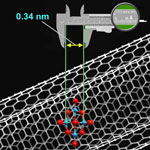 Metrology is the science of measurements, and nanometrology is that part of metrology that relates to measurements at the nanoscale. Many governments worldwide have existing nanotechnology policies and are taking the preliminary steps towards nanometrology strategies, for example in support of pre-normative R+D and standardization work. In this Nanowerk Spotlight, we look at the European Commission funded project Co-Nanomet as an example of the importance of nanometrology as a key enabling technology for quality control at the nanoscale. While a first and obvious benefit of metrology is its potential to improve scientific understanding, a second, equally important, but less obvious benefit of metrology is closely linked to the concepts of quality control or conformity assessment, which means making a decision about whether a product or service conforms to specifications.
Metrology is the science of measurements, and nanometrology is that part of metrology that relates to measurements at the nanoscale. Many governments worldwide have existing nanotechnology policies and are taking the preliminary steps towards nanometrology strategies, for example in support of pre-normative R+D and standardization work. In this Nanowerk Spotlight, we look at the European Commission funded project Co-Nanomet as an example of the importance of nanometrology as a key enabling technology for quality control at the nanoscale. While a first and obvious benefit of metrology is its potential to improve scientific understanding, a second, equally important, but less obvious benefit of metrology is closely linked to the concepts of quality control or conformity assessment, which means making a decision about whether a product or service conforms to specifications.
Apr 8th, 2011
 It started innocently enough with isolated instances of smoke coming out of computers. Then networks crashed. Now, programs are malfunctioning on a large scale, shutting down the Vatican's huge computer infrastructure which it depends on to manage its billions upon billions of investment dollars, real estate portfolios, and art collections. It is difficult to obtain all the details, but it appears that some form of nanotechnology got out of control. Surprisingly, and against its deeply ingrained reflexes of total openness and transparency, the Vatican initially tried to cover the whole thing up. Until a tabloid reporter got wind of what had happened and the whole thing became public with an article today (April 1) in an Italian tabloid that had this sensation-seeking headline splashed all over the front page: "Gay nanobots ballano Bunga-Bunga in Vaticano" - Gay nanobots dance Bunga-Bunga in the Vatican.
It started innocently enough with isolated instances of smoke coming out of computers. Then networks crashed. Now, programs are malfunctioning on a large scale, shutting down the Vatican's huge computer infrastructure which it depends on to manage its billions upon billions of investment dollars, real estate portfolios, and art collections. It is difficult to obtain all the details, but it appears that some form of nanotechnology got out of control. Surprisingly, and against its deeply ingrained reflexes of total openness and transparency, the Vatican initially tried to cover the whole thing up. Until a tabloid reporter got wind of what had happened and the whole thing became public with an article today (April 1) in an Italian tabloid that had this sensation-seeking headline splashed all over the front page: "Gay nanobots ballano Bunga-Bunga in Vaticano" - Gay nanobots dance Bunga-Bunga in the Vatican.
Apr 1st, 2011
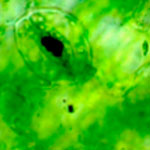 At the core of research efforts to determine the impact of synthetic nanoparticles on the environment and living systems is a fundamental understanding of the interactions between man-made nanoparticles and natural living systems that have evolved over millions of years. To describe nanoparticles at large, it may be beneficial to acknowledge that 1) biological systems are part of the food chain and therefore an essential component of the ecosystems and 2) collaborations are essential for such interdisciplinary research. Researchers have now presented a biophysical perspective that describes the fate of nanoparticles in both the aqueous phase and in living systems.
At the core of research efforts to determine the impact of synthetic nanoparticles on the environment and living systems is a fundamental understanding of the interactions between man-made nanoparticles and natural living systems that have evolved over millions of years. To describe nanoparticles at large, it may be beneficial to acknowledge that 1) biological systems are part of the food chain and therefore an essential component of the ecosystems and 2) collaborations are essential for such interdisciplinary research. Researchers have now presented a biophysical perspective that describes the fate of nanoparticles in both the aqueous phase and in living systems.
Mar 16th, 2011
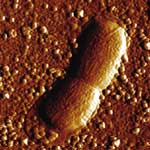 One of the main basic bacterial survival strategies is the colonization of a surface and the consequent growth as biofilm community, which is embedded in a gel-like polysaccharide matrix. In spite of its swimming/planktonic counterpart, such sessile adherent bacterial population represents an excellent life-support system. A biofilm like bacteria community is in fact highly resistant to almost any classical bactericidal and bacteriostatic tools, ranging from broad-spectrum antibiotics to UV-rays, disinfectant, heat, and so on. Thus, the design of biomaterials with active antibacterial and self-cleaning properties represents a good opportunity for solving the biofilm associated infections. One of the main goal is avoiding one of the first necessary steps required for the biofilm growth, namely the bacterial adhesion onto the target surface.
One of the main basic bacterial survival strategies is the colonization of a surface and the consequent growth as biofilm community, which is embedded in a gel-like polysaccharide matrix. In spite of its swimming/planktonic counterpart, such sessile adherent bacterial population represents an excellent life-support system. A biofilm like bacteria community is in fact highly resistant to almost any classical bactericidal and bacteriostatic tools, ranging from broad-spectrum antibiotics to UV-rays, disinfectant, heat, and so on. Thus, the design of biomaterials with active antibacterial and self-cleaning properties represents a good opportunity for solving the biofilm associated infections. One of the main goal is avoiding one of the first necessary steps required for the biofilm growth, namely the bacterial adhesion onto the target surface.
Mar 8th, 2011
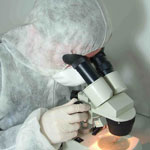 There is a need for the larger nanotechnology community synthesizing, applying or characterizing nanomaterials to have a methodology to evaluate the risk and to apply adequate protection measures to limit human exposure. Researchers in Switzerland have now taken the initiative and presented a practical, user-friendly procedure for a university-wide safety and health management of nanomaterials, developed as a multi-stakeholder effort (government, accident insurance, researchers and experts for occupational safety and health). The procedure consists of two parts: Using a decision tree, nano-labs are sorted into three hazard classes, which corresponds to analogue approaches applied to other hazard types (biohazard, radioprotection or chemistry). A list of required prevention/protection measures (safety barriers) for each hazard level is then provided.
There is a need for the larger nanotechnology community synthesizing, applying or characterizing nanomaterials to have a methodology to evaluate the risk and to apply adequate protection measures to limit human exposure. Researchers in Switzerland have now taken the initiative and presented a practical, user-friendly procedure for a university-wide safety and health management of nanomaterials, developed as a multi-stakeholder effort (government, accident insurance, researchers and experts for occupational safety and health). The procedure consists of two parts: Using a decision tree, nano-labs are sorted into three hazard classes, which corresponds to analogue approaches applied to other hazard types (biohazard, radioprotection or chemistry). A list of required prevention/protection measures (safety barriers) for each hazard level is then provided.
Feb 14th, 2011
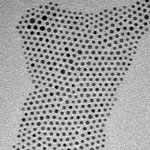 Their use in large-scale commercial applications requires cobalt nanoparticles with well-defined size and shape to be prepared in large quantities. Accurate tuning of the nanoparticle size and shape requires understanding of the mechanisms involved in particle nucleation and growth. In spite of extensive ongoing research, these mechanisms are still not fully understood owing to their complexity and interplay. Moreover, the current small-scale synthesis methods, such as the hot-injection method, can be difficult to scale to industrially relevant levels. In order to find more suitable methods for synthesizing cobalt nanoparticles, Finnish researchers revisited a widely studied hot-injection synthesis of monodisperse cobalt nanoparticles and show that the particle nucleation differs from what is expected for a hot-injection synthesis.
Their use in large-scale commercial applications requires cobalt nanoparticles with well-defined size and shape to be prepared in large quantities. Accurate tuning of the nanoparticle size and shape requires understanding of the mechanisms involved in particle nucleation and growth. In spite of extensive ongoing research, these mechanisms are still not fully understood owing to their complexity and interplay. Moreover, the current small-scale synthesis methods, such as the hot-injection method, can be difficult to scale to industrially relevant levels. In order to find more suitable methods for synthesizing cobalt nanoparticles, Finnish researchers revisited a widely studied hot-injection synthesis of monodisperse cobalt nanoparticles and show that the particle nucleation differs from what is expected for a hot-injection synthesis.
Feb 9th, 2011
 Glues adhere to solid materials via a multitude of fundamental physical or chemical interactions. Either chemical reaction times or solvent evaporation rates determine the point in time, when this interaction sets in and fixes the object to be glued. Electric potential has been used to attract polymers continuously to an electrode surface and to toggle molecules between states for a molecular switch. If you wanted to create electric glue, you would need to be able to control the interaction of a polymer and an electrode surface reversibly, thus creating a nanoscale system with electrochemically controlled adhesion. A research team now describes how Coulomb forces between polymers and surfaces may be measured, controlled, and manipulated.
Glues adhere to solid materials via a multitude of fundamental physical or chemical interactions. Either chemical reaction times or solvent evaporation rates determine the point in time, when this interaction sets in and fixes the object to be glued. Electric potential has been used to attract polymers continuously to an electrode surface and to toggle molecules between states for a molecular switch. If you wanted to create electric glue, you would need to be able to control the interaction of a polymer and an electrode surface reversibly, thus creating a nanoscale system with electrochemically controlled adhesion. A research team now describes how Coulomb forces between polymers and surfaces may be measured, controlled, and manipulated.
 Subscribe to our Nanotechnology Spotlight feed
Subscribe to our Nanotechnology Spotlight feed





